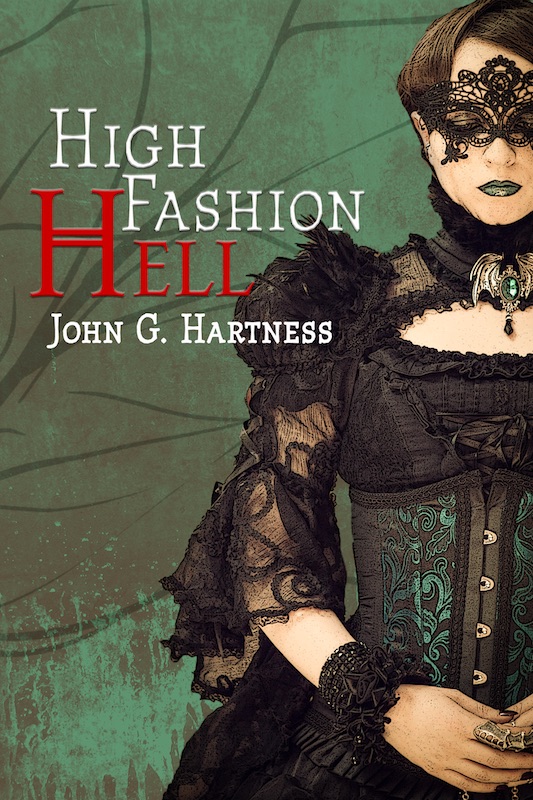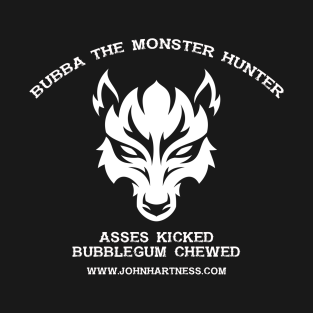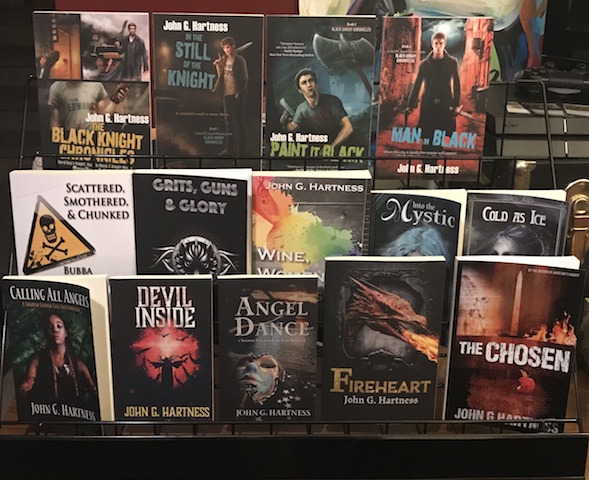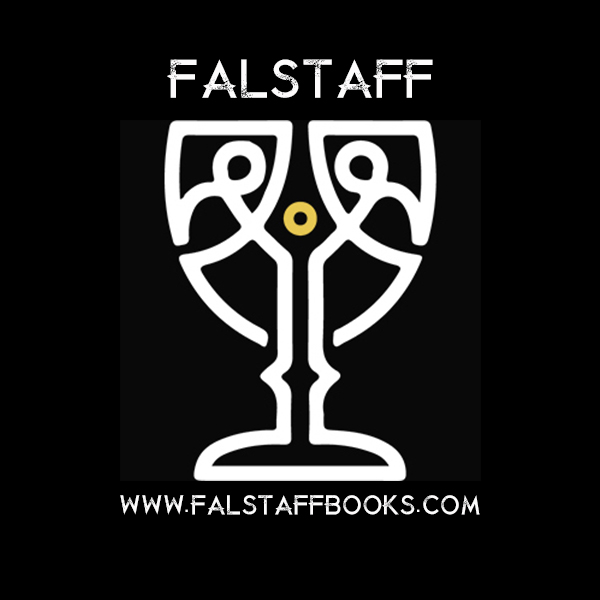
by john | May 16, 2017 | Business of publishing, How to Sell Books, Promos/Giveaways
Last time around, we talked about the two types of email list subscribers – incentivized subscribers and organic subscribers. Organic subscribers are the ones that come to you naturally, they are interested in you or your work, and they seek you out and sign up of their own free will. These are the unicorns of email list subscribers – they’re lovely, they’re beautiful, and may very well be mythical.
Nah, not really. But while they are the best type of subscriber, they are also the toughest to acquire, and the ones that require the most effort to cultivate. They are the folks that sign up from convention appearances, from links in the back of your books (you do have a link to your newsletter signup page in the back of your ebooks, don’t you?), or just from finding you on Facebook or the interwebs.
The other flavor of subscriber is much more prevalent, and they are the ones who subscribe because you give them something for signing up. I call these incentivized subscribers, and while it may seem at first blush that I value them less than organic subscribers, that’s not true at all. They just require different care and feeding.
Organic subscribers are easy to keep, but much harder to get in the first place. Incentivized subscribers are easier to get in the door, but much harder to keep once you have them. Both type of subscriber can turn into true fans over time, you just need to know what kind of cultivation you’ll have to do for each one.
There are good and bad ways to incentivize people signing up for your newsletter, and multiple methods of each. My favorite method of getting people to sign up for a newsletter is to give them a free ebook. I offer a free Quincy Harker short story, High Fashion Hell, to new subscribers. If you aren’t already on my email list, you can click here to join and get your free ebook. This story is available for sale, and it’s also available in an anthology, but there have been hundreds of copies of it claimed by people signing up for my email list since I started giving it away. So there is still some incentive to sign up, even with a story that is available elsewhere.
The way this works is – people see the link, click the link, and they are taken to a signup form on Mailchimp. Once they fill out the signup form, and confirm their email address, they receive another email that directs them to a page on BookFunnel. Book funnel hosts the ebook file and sends it to people in whatever format they request, for Kindle, Nook, iPad, whatever. You don’t have to put anything else in place. Mailchimp costs a monthly fee based on the number of email addresses on your list, and Bookfunnel charges based on the number of downloads per month.
I pay $25/ month for MailChimp and $10/month for BookFunnel. I also pay $20/month for Instafreebie, another service I use to send out ARCs and rewards. I’ll talk more about IF in a later post. With Hootsuite, another service I’ll talk about later, I spend about $60/month in automation and services to help with my marketing. As my lists and reach grows, so will that number. Nothing in life is free, and if it is, it’s probably worth what you pay for it. Hell, I even have a blurb at the end of this post asking for money, so this advice isn’t even really free. (BTW, if you think this advice is valuable and want me to continue making posts like this, feel free to join my Patreon.)
So how do you boost your numbers quickly? Well, there are a couple of ways. First, you can do newsletter swaps with writers that have more subscribers than you. Or even writers with the same number of subscribers as you, because they’re almost certainly different subscribers. Here’s how that works – A few months ago, Eric Asher set up a six-author mailing list swap. Each author sent out a newsletter to their list with everybody else’s book cover in it, and built a link in the cover to that author’s signup page. So all the people on Eric’s list who clicked on the High Fashion Hell cover got the chance to sign up for my email list. All the people who clicked on Eric’s cover in my newsletter got the chance to sign up for his list (and get some awesome free books. Go to his website. Sign up for the list. Tell him I said Hi).
I gained several hundred new subscribers, because they wanted free ebooks. A lot of them stuck around, because they were already pre-sorted as people who wanted to read the kind of stuff I write, because Eric and I write in similar genres. Those are incentivized subscribers, but they’re vetted leads, and much more likely to become “sticky” than a blind signup in my next example.
That’s a good way to incentivize signups – you aren’t spending much cash, and the thing you’re giving away is something that people who want to buy your books will want, but the general populace will have little interest in. Someone who doesn’t read will have no interest in signing up for my email list to get a free ebook. But they might want a free iPad!
Yeah, big-ticket giveaways aren’t worth a shit. They just aren’t. There is some value to giving away something like a Kindle Paperwhite, but a Kindle Fire or an iPad has just as much value to a non-reader as it does to a reader, and even with a PaperWhite, there’s no guarantee that the winner will read in your genre. If you write paranormal romance, you aren’t going to get a whole lot of value if a Chris Kennedy fan wins a Kindle from you. But if you like Military Sci-Fi, check Chris out. He’s good people.
The stickiness of a subscriber who joins up for a big-ticket giveaway like that is much, much lower than someone who signs up to get a free ebook. When I’ve done big massive email list building promotions, I see a lot of quick signups, then a lot of quick unsubscribes as soon as they get the first newsletter. And that costs money, not just in the cost of the item given away, but also in the escalation of your mailing list numbers, which costs more for MailChimp. So be careful about participating in those kind of campaigns. I just don’t think they’re worth it.
So what should you do if you’re just starting out trying to build an email list?
- Set up a MailChimp Account. This will manage the list so yo don’t have to fuck around in Excel or Access or something else awful. If you don’t like MailChimp, find another email list service. But use something of that ilk.
- Set up Automation so that you as soon as someone signs up for your list, they get a welcome email from you. This is where you can set up your giveaway as well.
- Set up a BookFunnel with a free ebook to lure subscribers in. It can’t be anything that’s available in Kindle Unlimited, but it also doesn’t have to be a novel. I feel like too many writers give away the farm to get email subscribers. If you’ve only got two novels published, don’t give one of them away for an email address. Write a prequel novella, or even short story, and use that as bait.
- Put a widget on your website with a link to drive signups. The book cover with a “Sign up for my Email List” tag is all you need.
- Create a Call to Action button on your Facebook Author page that is a signup button for your email list.
- Automate your Twitter and Facebook (or other social media outlets) to send out one message every day reminding people that they can get free shit by signing up for your email list. Every. Single. Day. Yes, even you, with one book out. Don’t do it every hour, but do it every day. Less than 20% of your FB contacts see the things you post, so you have to post frequently to get them out there. I don’t care if you think it’s annoying, shut up and do it. I’ll teach you how to Hootsuite later.
- Find some other authors who have shitty newsletter numbers and do a swap with them. Find other writers in your genre and do a newsletter swap with them. See if your publisher will send out a newsletter with your book cover linking to a newsletter signup page.
- Find authors who like you that have much bigger lists who will let you ride their coattails a little and do a newsletter swap with you. Don’t use this willy-nilly, and don’t email me. If everybody that reads this emails me, I’ll be overwhelmed. I might even get ten emails, given the traffic I get here. 🙂
- Communicate with your list regularly. At least once a month. Don’t consider it spam. Don’t consider it bothering people. Your readers, as much as you love them, aren’t your besties. They are your customers, and your job is to make sure they know about everything you have out there that they can buy. So go get their money!
That’s a pretty good primer on building an email list. I hope it’s been helpful. If you think I missed something, hit me up in comments. If you think I’m an idiot, then you probably shouldn’t have read this far and should go do something more fulfilling. 🙂 If you think I’m brilliant, buy all my shit. Or click the link for my Patreon.
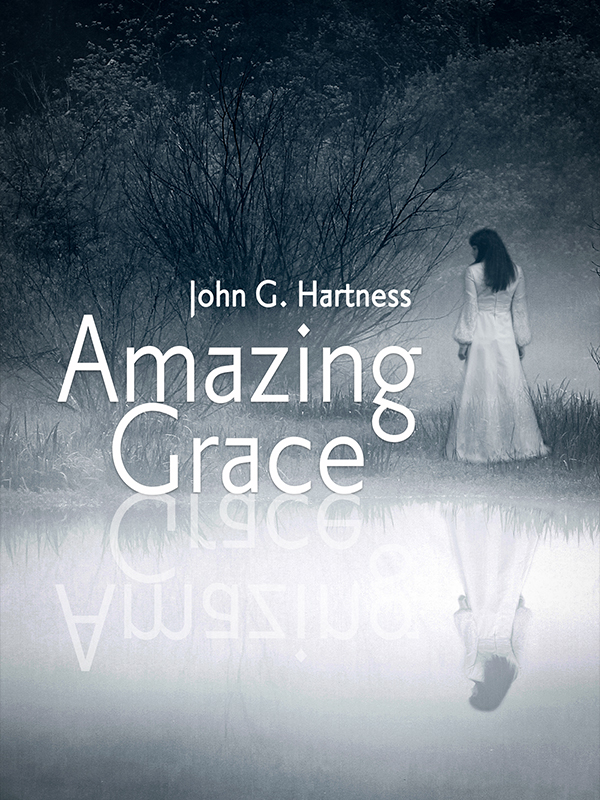
by john | May 11, 2017 | Amazing Grace, Promos/Giveaways, Serialized Fiction, Writing
Hey y’all, just a quick note to let you see the awesome cover that Natania Barron has made for Amazing Grace! I’m still not sure if this will release under my name or a pseudonym, but either way, we can fix that pretty easily if I decide the change the name. But here’s the cover Natania did up for me. Let me know what you think!

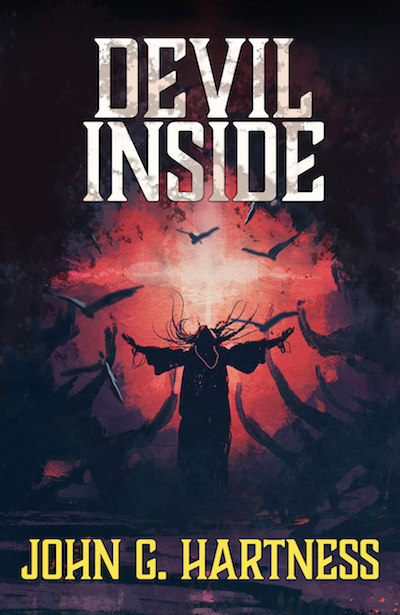
by john | May 10, 2017 | Business of publishing, How to Sell Books, Promos/Giveaways, Writing
So you know you need an email list, but you have no idea how to go about building an email list, right? You don’t think you have anything interesting to say, or anything that people will want to hear about. You don’t release a book every month like some crazy bastards you know (BTW, the new Quincy Harker book is out for pre-order, and you should totally do that), you don’t think you lead a terribly interesting life, but this Hartness asshole keeps telling you to build a mailing list. So how are you supposed to do that?
There are a lot of ways to build a mailing list, and we’re going to start with my preferred method. The two styles of mailing list construction are Organic Growth and Incentivized Growth. Organic Growth is slower, much more labor-intensive, and requires writers to do the one thing that many of them hate to do – interact with people.
It’s also the best way to build a mailing list. With organized growth, you are slowly cultivating people who actually want to hear from you. People who have either seen you on a panel, or at a con table, or met you in line at the restroom, or in the bar, or read one of your books, or whatever – they have had some interaction with you or your work and they WANT to know more. Maybe they’re just another writer friend and they want to know when you have something new coming out. Whatever. You don’t care why they want to hear from you, they have interacted with you in some way, and made the decision that they actually want to hear from you.
These are the best mailing list subscribers. They are already predisposed to want to hear from you. They like you, and people buy shit from people the like. They don’t like to be lectured at, they don’t like to be preached at, but they like to laugh, so make people laugh every chance you get. Or cry. People like to cry, too, They don’t, however, like to feel like they are trapped in an elevator with Aunt Marge from the family reunions who always smells a little like pee and wants to pinch you. So don’t be Aunt Marge.
That escalated quickly. Moving back to the point, the people who subscribe organically are more likely to click on a link in your newsletter, and more likely to open the newsletter in the first place.
On the other side of the coin are the Incentivized Subscribers. These are people who want a free ebook, or want to enter to get a free Kindle, or whatever they are getting out of signing up for you list. These folks will have a high number of join and drop folks, and you won’t be able to convert that many of them into real fans and readers. Sorry, it’s just true. You might have 8,000 people on your email list, but if you’re only getting a 10% open rate on your newsletter, then you’re not doing any better than someone with a 2,000-person list and a 50% open rate. So look for quality over quantity, or ideally a mixture of both. Because you do need to be visible, and giveaways and mailing list swaps are good ways to do that, and they are often good ways to increase your mailing list dramatically in a very short time. I’ve added 1,000 people to my mailing list since the beginning of this year, and a lot of that has been off of Incentivized Subscribers. I’ve also had a lot of people drop from my mailing list immediately after downloading their free ebook, so the long-term success of those programs is yet to be determined.
So how do you get the Organic Subscribers? Well, there are a few ways.
If you are self-published, you can put a signup link in the back of all of your ebooks. If you are traditionally published, you can put a link in your author bio and either hope your publisher doesn’t see it, or ask your publisher if it’s okay. If I publish you, it’s fine. I want you to have a million people on your email list, because then we both make more money. This is a passive method that will slowly net some signups.
Please note that all of these organic methods are slow dribbles of signups. They are like putting out dozens of little buckets in a rainstorm. You don’t get very much water in any one bucket, but when you collect everything out of all the buckets, you can fill a bathtub pretty quick. These are your buckets.
Your website is another bucket. You’ll notice there is a link one the right-hand side of the page here with a picture of the High Fashion Hell cover. That’s a signup link for my website. People click on the picture, cover by the lovely Natania Barron, and they are directed to a signup form for my email list. Oh, you don’t have a website? Well, welcome to the late 20th century, you need a website. I suggest it be your name, not any book or series name, because you will have your name longer than you will have any given book series, and you want to remain easy to find online. Same with email addresses – get one that’s just your name, because eventually you will no longer want to be known as Hot2Trot4Cumberbatch420@whateverthefuck.com.
My author page on Facebook has a call to action button, which is another email list signup. That allows people who find me on Facebook to sign up for my emails directly from there. You don’t have an author page yet? Well, better get on that shit. You are a professional, whether you do this for your entire living or not, and you need to be able to use all the tools at your disposal.
I also use Twitter to drive email signups. I’ll get into the scheduled Twitter and Facebook posts in a later article, but suffice to say that at least once per day a message goes out on Facebook and Twitter telling people that I have a mailing list, and that they can get a free ebook if they sign up for it. I don’t get a ton of email signups, I have about 2,500 people on the list, and I add 5-6 per day. So it’s pretty good, and it’s growing nicely, but it’s not yet a huge list by any stretch. And I’m good with that, because it remains the single most effective marketing tool I have (heh heh, I said tool).
So that’s a little bit on organic methods to grow an email list. Next time around, we’ll talk about Incentivized Subscribers, good and bad incentives to build a list, and how to streamline all this shit so you don’t have to babysit it all the time. Until then, if you have any questions, leave them in the comments, and if you love what I’m doing, feel free to subscribe to my email list by clicking the book cover to your right or you can subscribe to my Patreon by clicking the link below. Thanks!

by john | May 2, 2017 | Business of publishing, How to Sell Books, Promos/Giveaways
This is not going to be exciting. None of these posts in this series are going to be exciting. I’m not going to tell you how to jump up the bestseller lists and go from selling five books each month to 5,000 in the span of thirty days. I’m not going to tell you The Secret To Becoming An Amazon Bestseller. I’m not going to tell you how to Make A Million Dollars Selling Ebooks.
I’m not going to do any of that crap. Because those posts are bullshit. The only people getting rich off the words in a bunch of How To Sell Ebooks books are the people that wrote the book. And I’m giving this shit away, so I’m obviously an idiot.
But I’m an idiot who makes a living selling books. So that puts me ahead of most idiots out there.
I pay my bills and feed my family off my writing. Most writers can’t do that. We live modestly, and we try to manage our spending, but we are a single-income family, and that income grows out of my writing. These posts will try to give you some of the tools that I use to sell more books. I’m not looking to make anyone (except me) into the second coming of Stephen King. I just want to help you find more success in your writing.
So let’s start with the basics – a mailing list. You’ve heard you need one, but you don’t know shit about how to build one. You don’t know what a newsletter should look like. You don’t know how to get people to subscribe to it, and you don’t know how to create one that doesn’t look like it was drawn by a three-year-old epileptic chimpanzee. So let’s start there.
Yes, you need a mailing list. Your newsletter is the single most important piece of marketing material that you have, with the exception of writing amazing books. People who sign up for your newsletter, for the most part, are already interested in you and your work. So first you have to create a mailing list, and figure out how to send a newsletter. Then we’ll move on to how to get people to sign up for your mailing list.
Mailing List Services – there are plenty of companies out there that will manage your email list for you. Constant Contact is the one that most big companies use, and you probably get 2-3 emails using that service every day. I use Mailchimp, because it’s cheaper at the level that I’m at. I’m currently at around 2700 people on my email list. That’s not a huge number, but it’s decent. It’s all the better because most of those people are there organically, but we’ll get to that later.
Mailchimp is a subscription service. They charge you for their work. In exchange for your monthly fee, they will collect all the email addresses and give you tools to send out good-looking newsletters and autoresponders to people when they contact you. I currently pay $40/month for this service, because of the number of people I have. I’m not far from looking for another service, because once you get over about 3500 names on your list, Mailchimp isn’t quite as cost-effective. But that’s a discussion for later as well.
Once you sign up with MailChimp, you have to start building a list. First add yourself. That lets you see the emails you send out in their natural and complete form. Then go over to your Facebook Author Page and build a button. Facebook lets you make a Call to Action at the top of your page, and yours should almost certainly say “Join my Email List.” It’s very easy to build the button, Facebook walks you through every step.
Once you’ve built your button on your author page (if you don’t have an author page, that’s a hint – you better get one), then it’s time to post some notices on your personal timeline and on your author page, telling people to sign up for your email list. You have to do this a few times. Facebook doesn’t show everything by everybody, so to get through their signal-to-noise ratio, you have to repeat yourself a few times. Also, you will have better success if you put the link in comments, as FB hides posts with links built in.
Don’t post all the damn time, just once a day or so. Let’s not be complete dicks about this promo thing. Yes, I understand exactly how often I post promotional things myself. But I have a LOT of shit to promote. So I’m not posting the same thing more than once per day.
While you’re waiting for someone to sign up for your mailing list, it’s time to set up some automations. MailChimp lets you create stored newsletters and welcome letters that go out whenever someone signs up for your mailing list. This way, whenever someone signs up to hear from you, they get a nice welcome email from you. A lot of people recommend sending one note within a few hours of signup, then another in a couple of days, then a third a week or two later. I send out two, one an hour or so after signup, then another a few days later. I figure a couple of weeks after they’ve joined the email list, they’ll be getting a newsletter anyway.
That’s always another question – how often should I send out newsletters? I have been doing mine once each month, but I’m about to increase to twice a month. Some folks send stuff out weekly, but I think that’s a little much. You want people to remember you, but not get tired of hearing from you. If you only have a few releases each year, then once a month is probably fine. But it is important to stay on top of it and send stuff out. Even if you don’t have a new book coming out, you can solicit reviews for older work, pitch your upcoming audio releases, publicize events and appearances, or promote stuff by your friends. All of those make for good newsletter fodder.
But you must send out your newsletter regularly. That’s the only way it’s going to get traction and you’re going to be “sticky” in people’s heads.
I’ll be back next week with talk about ways to grow a newsletter, like newsletter swaps, and incentives. If there are questions about what I’ve written this week, leave them in the comments! Thanks!

by john | Apr 14, 2017 | Evolution, Promos/Giveaways, Writing
My buddy and Falstaff Books author Darin Kennedy hooked me up with JD, and since we will both be at JordanCon next weekend, I thought this might be a very good time to feature him on this blog post. If you get a chance and you’re anywhere near Atlanta, come visit us!
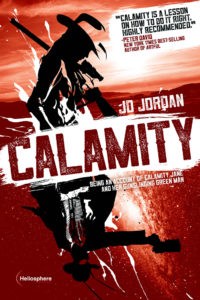 Calamity Jane and a goddamn spaceman?
Calamity Jane and a goddamn spaceman?
I was sitting on the steps of the Metro Atlanta Chamber of Commerce after a party, waiting for the valet, when the ideas for two historical scifi books popped into my head. One of those became the novella Seeing the Elephant that ultimately grew into the novel Calamity. I remember bouncing ideas off my friends and it took a while for the story—as you read it—to take shape. But it was always about growth and coming of age in the West, in the aftermath of the Civil War, on the frontier of American civilization. At the time, I was deep into both HBO’s Deadwood and Fox’s Firefly and their influences are unmistakable in Calamity. If you don’t know what I mean, go watch the first few episodes of Deadwood, especially “Here Was a Man” and “The Trial of Jack McCall”—Robin Weigert’s was the first Calamity Jane I ever really knew—and the Firefly episodes “Out of Gas” and “Objects in Space”—hints of the scifi-west and the Green Man can be found there. I was so intrigued by Calamity Jane as a historical figure—an iconic woman in a man’s world—and as a transformative character. I fell in love with the potential of her right away.
I’ve had a number of readers comment about how well-written they think Jane is as a teenager and as a woman—especially when they know she was written by a man. I even had an agent express surprise on meeting me because she assumed I’d be a woman based on what she’d read of chapter one. Such amazing compliments! I like to tell people I was neither a teenage girl nor very successful with them when I was young, so I reckon I’m just as surprised as that agent was. But I think I was able to write her as well as I was not because I was tapping into anything uniquely female (my wife disagrees on this point) but because I was able to tap into Jane’s frustration, her feelings of abandonment and ostracization, her loneliness, and—of course—her anger. I was in a lonely and angry place when I wrote her—though I didn’t appreciate it at the time—and writing her always felt more like commiseration than pretending. I think to some degree, we’ve all been Martha wanting to become Jane. I sure was.
Of course, I wasn’t into westerns so the idea to combine western and scifi ended was as much the challenge as the story and the heroine. A fancy literary explanation might go: A lot of the appeal for this kind of mash-up comes from the fact that these are both fundamentally American and fundamentally modern genres. Westerns are the product of America colonization of the continent—and all the good and the bad that goes with ideas of frontier and Manifest Destiny and conquest in that history. Scifi, on the other hand, turns many of these themes around, looking forward while always metaphorically looking back. Where settlers drove out the natives in the 1800s, so will we—the beneficiaries of that conquest—face threats of extermination in the future. The settlers have become the first peoples in jeopardy and the idea of the Green Men and the Gray Men as Others who can menace the West in this way is an interesting one. And one that preys on our fears of annihilation.
But the more basic answer is that Jane and the Green Man insisted on these genres. A prospective agent once asked me to remove the Green Man from the story and I just couldn’t see how it would work. It suddenly wasn’t anything I wanted to read. The Green Man is Jane’s magic feather. He’s her Man with No Name. His alienness is so integral to her view of the world—even when he’s not around or when he’s the only scifi thing in the story—that the western part of the novel would’ve been diminished without the science fiction.

by john | Apr 4, 2017 | Promos/Giveaways, Writing
I have a bunch of stuff coming out in the next couple months, and I’m fortunate enough to have an amazing cover artist, Natania Barron, working on them. She’s already got the covers knocked out for the next Quincy Harker book, which will be out this month sometime, the next Shadow Council book, which will hit e-stores next month, and a brand new standalone project that’s coming later in the spring.
 First up, here’s the cover for Devil Inside, the next Quincy Harker novella. Devil Inside continues the 8-book crossover event that I’m tentatively calling Quest for Glory. If anyone comes up with a better name, I’m all for it.
First up, here’s the cover for Devil Inside, the next Quincy Harker novella. Devil Inside continues the 8-book crossover event that I’m tentatively calling Quest for Glory. If anyone comes up with a better name, I’m all for it.
In this story, Harker is dealing with some of the fallout from Season 2, then moves on to hunting down the first of the Implements of the Archangels that he has to find. His quest takes him to Charleston, SC, and of course it isn’t as easy as he hoped.
He has to deal with the city’s mystical guardians, who aren’t very trusting of a random new wizard in town, plus a sorcerer who wants to sink the city beneath the ocean, AND he has to find a magical book and his best hope lies in a dotty shopkeeper that speaks only in Shakespeare quotes.
Life can get tough when you’re the Reaper.
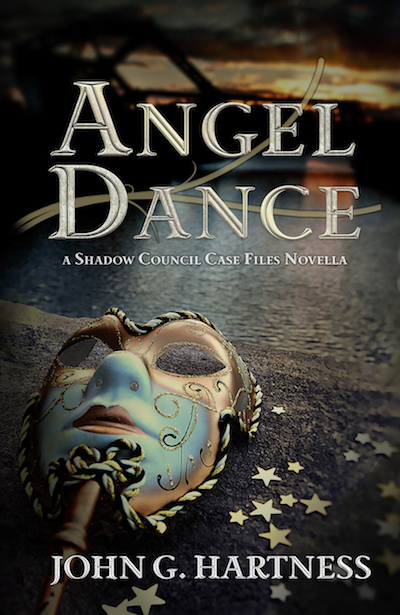
Angel Dance is the next episode in Quest for Glory, and I’m currently writing this one. This novella features Adam, Frankenstein’s monster, in New Orleans looking for the Horn of the Herald. The Horn was played by the Archangel Sealtiel in the War on Heaven, and it’s now lost in a sea of musical instruments in one of the greatest cities for music in the world. Needle, meet haystack.
And of course that can’t be the only thing going on, so Adam has to deal with the fact that someone or something is hunting down practitioners of magic in the Crescent City and murdering them, including one of Adam’s few friends. He doesn’t like it when people hurt his friends.
Don’t make him angry. You wouldn’t like him when he’s angry. For real, folks, he’s friggin’ Frankenstein’s monster, why would you piss him off?

Fireheart is a bit of a departure for me. One, it’s a full-length novel, and y’all know I don’t write that many of those. Two, it’s more of a YA thing than a snarky adult thing, which was a fun changeup to write. And three, it’s a standalone rather than part of a series, so this book is all you get with these characters. It’s something I’ve had kicking around for a while, and I finally dragged it out, finished it, and polished it up. It oughta be out late spring.
In Fireheart, a mountaintop removal mining operation wakes up a sleeping dragon. That’s not a euphemism, they really wake up a damn dragon. Of course, the dragon has been asleep for a few hundred years, and he’s pretty grumpy when his alarm goes off. Rachel Hampton’s father is one of the head geologists at the mine, and he’s injured in the attack.
Rachel’s life is complicated enough with her best friend crushing on her and the cute boy she ran into on her bike (literally!). Then she’s riding through the woods and sees this really cute guy standing in the woods. Butt naked. With golden skin. Because dragons don’t always wear their scales.
So there’s a love triangle. And a dragon. And black helicopters. Because why wouldn’t there be black helicopters?
That’s a little news on the latest upcoming releases. As always, you can join my email list to find out about all this stuff, too! There’s a link over on the side of the page.




 Calamity Jane and a goddamn spaceman?
Calamity Jane and a goddamn spaceman?

